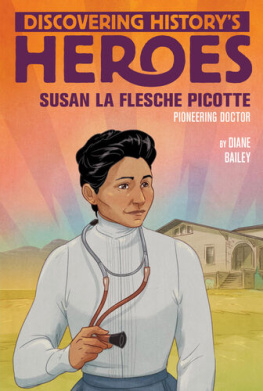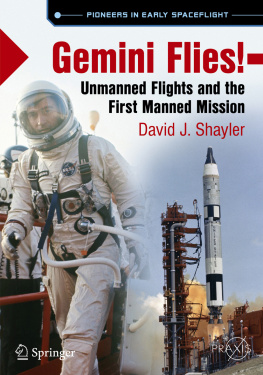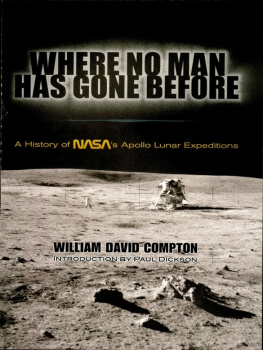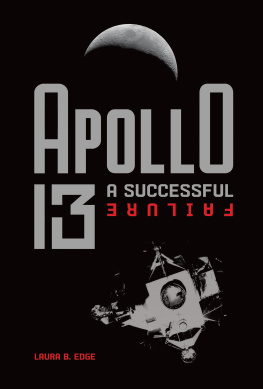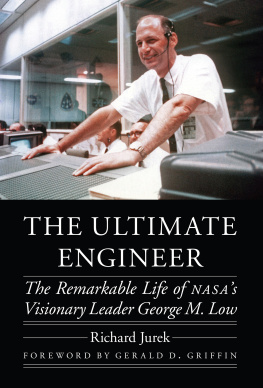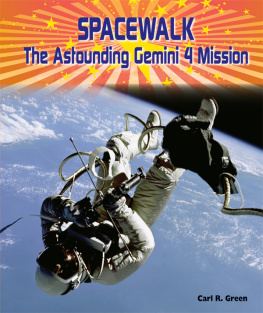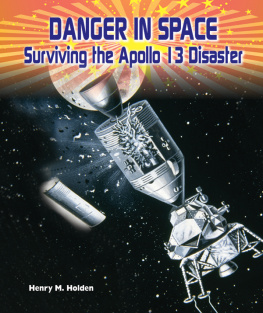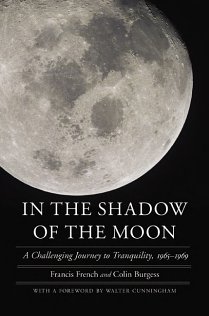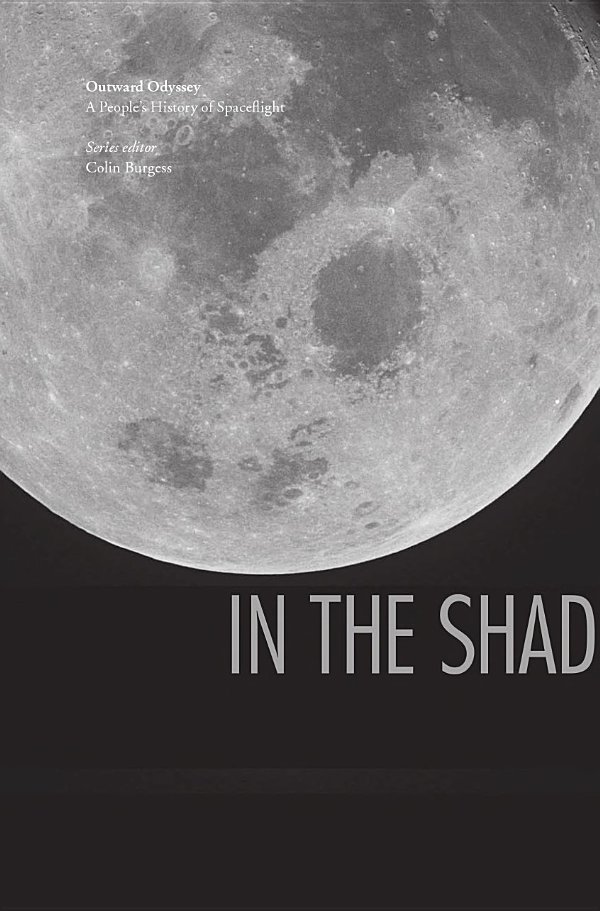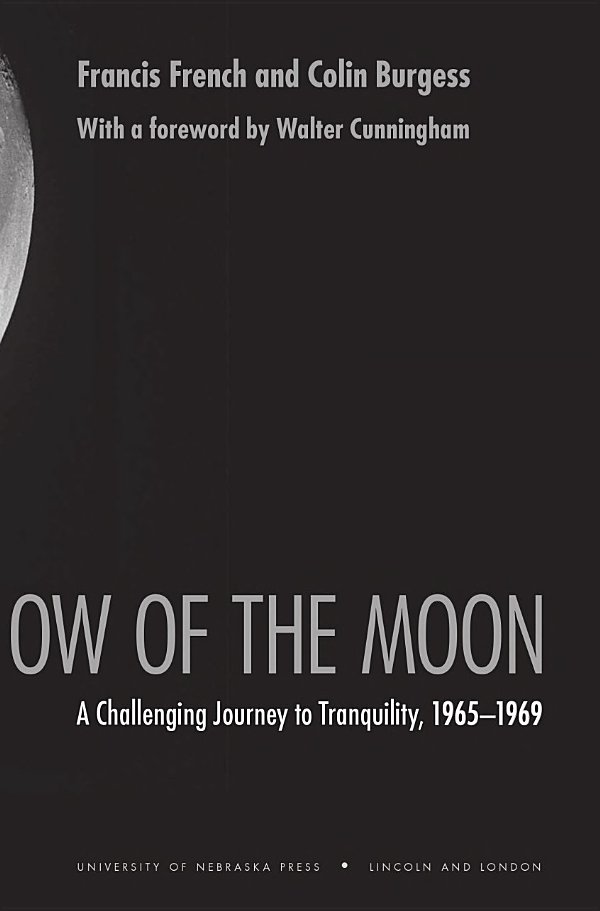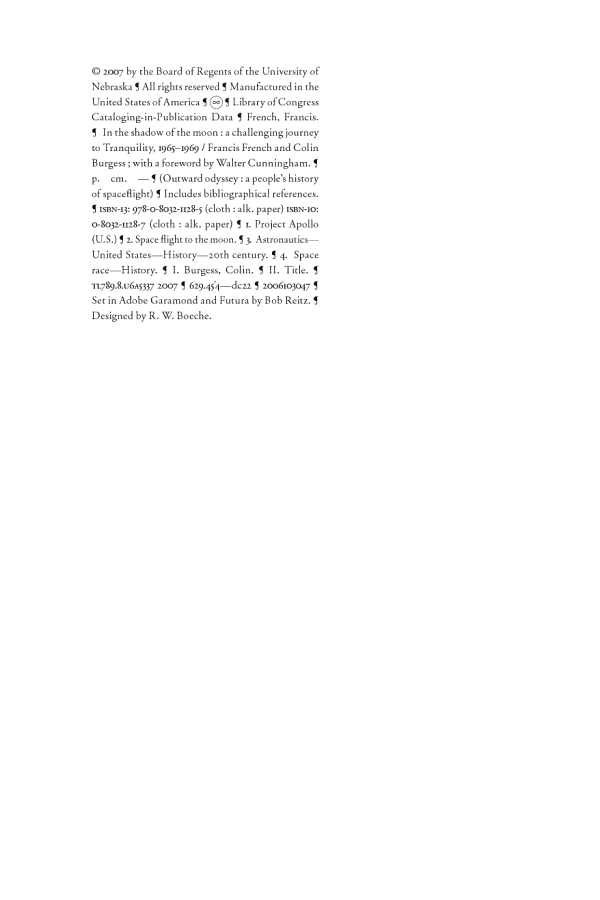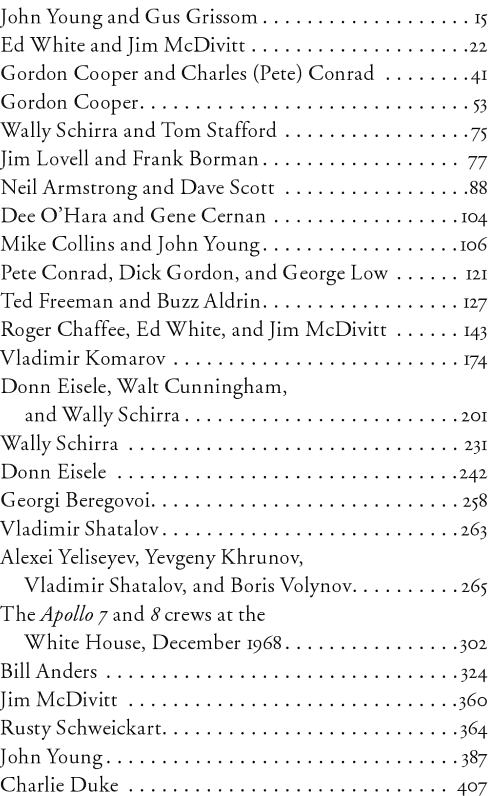Francis French - In the Shadow of the Moon: A Challenging Journey to Tranquility, 1965-1969
Here you can read online Francis French - In the Shadow of the Moon: A Challenging Journey to Tranquility, 1965-1969 full text of the book (entire story) in english for free. Download pdf and epub, get meaning, cover and reviews about this ebook. year: 2010, publisher: Bison Books, genre: Science. Description of the work, (preface) as well as reviews are available. Best literature library LitArk.com created for fans of good reading and offers a wide selection of genres:
Romance novel
Science fiction
Adventure
Detective
Science
History
Home and family
Prose
Art
Politics
Computer
Non-fiction
Religion
Business
Children
Humor
Choose a favorite category and find really read worthwhile books. Enjoy immersion in the world of imagination, feel the emotions of the characters or learn something new for yourself, make an fascinating discovery.

- Book:In the Shadow of the Moon: A Challenging Journey to Tranquility, 1965-1969
- Author:
- Publisher:Bison Books
- Genre:
- Year:2010
- Rating:5 / 5
- Favourites:Add to favourites
- Your mark:
In the Shadow of the Moon: A Challenging Journey to Tranquility, 1965-1969: summary, description and annotation
We offer to read an annotation, description, summary or preface (depends on what the author of the book "In the Shadow of the Moon: A Challenging Journey to Tranquility, 1965-1969" wrote himself). If you haven't found the necessary information about the book — write in the comments, we will try to find it.
The Gemini program has always been NASAs quiet, superachieving middle child, overshadowed by the space cowboys of the Mercury years and Apollos lunar prospectors. French, an executive at Sally Ride Science, and Burgess, author of Fallen Astronauts, chronicle the missions on which American astronauts learned how to live in space for more than a few hours; steer a spacecraft around the Earth at almost 20,000 miles an hour; rendezvous with a companion ship; and navigate to another world and return safely. The authors relate that during the early Gemini missions, in the mid-60s, several crews came close to ending in tragedy before NASA had the bright idea to have Buzz Aldrin practice in a Baltimore swimming pool for the final flight, Gemini 12. The book also covers the Apollo program and the U.S.S.R.s simultaneous space efforts. Although the authors interviewed surviving astronauts, family members and NASA staff for some fresh material, space aficionados will know most of this saga by heart. For young readers born decades after man last walked on the moon, this is a readable introduction to the first years of Americas leap into space. Illus. (Sept.)
Copyright Reed Business Information, a division of Reed Elsevier Inc. All rights reserved.
[A] readable introduction to the first years of Americas leap into space._Publishers Weekly_
(_Publishers Weekly_ 20070918)
French and Burgess present a first-rate, detailed, and very personal account of the space race to the moon . . . . Strongly recommended both as a study of the social interactions among this unique group of people and as a gripping series of anecdotes that describe the exciting, dangerous steps behind the successful moon landing._CHOICE _
(W.E. Howard III CHOICE )
Authors Burgess and French are even-handed and equitable, and have done an excellent job in covering a vast expanse of material. . . . The opportunity to get the true stories from the astronauts themselves is a luxury that will sadly not be available forever, and In the Shadow of the Moon has done an excellent job in gathering and eliciting the stories of these men, not just the official reports, but the personal touches that render them more human. . . . The authors have a touch for weaving revealing and captivating personal narratives amidst the nuts-and-bolts space history.Michael Patrick Brady, PopMatters.com
(Michael Patrick Brady PopMatters.com )
This book has everything you ever wanted to know about the astronauts that paved the way for the first Moon landing. Rarely does one get the entire information of Mercury, Gemini, and Apollo programmes, encased in one book, about the men who entered the dangerous and untried realm of flying off the Earth.Jeff Green, Liftoff
(Jeff Green Liftoff )
Francis French: author's other books
Who wrote In the Shadow of the Moon: A Challenging Journey to Tranquility, 1965-1969? Find out the surname, the name of the author of the book and a list of all author's works by series.

